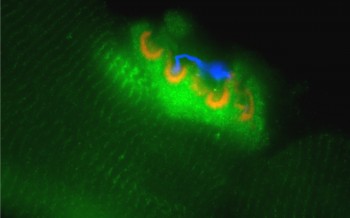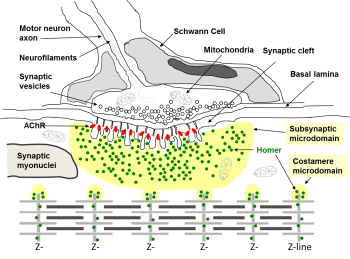The Muscle Biopsy experiment aims to investigate how cells communicate (called signalling pathways in medical jargon) that are associated with nerve-muscle contacts in muscles attached to the skeleton when in weightlessness.
The experiment was proposed by the Charité Universitätsmedizin Berlin, Center of Space Medicine in Germany with Dieter Blottner as principal investigator. Dieter introduces the experiment himself in this blog entry:
Studying cell communication in a laboratory on Earth is always influenced by gravity and so might not give us meaningful answers to the as yet unresolved phenomena of muscle wasting away in space when not being used.
We think cell communication might be tied to gravity-sensing and we are exploring unexpected changes in human skeletal muscle cell communication when the force of gravity is not pulling on astronauts.
With the help of a muscle biopsy from crewmembers (yes, we are removing a tiny sample of their leg muscle), we hope to get new insights to fundamental principles in molecular physiology and neuromuscular cell communication that could find their way into the next generation of textbooks. We hope our work will help find better ways to treat muscular problems such as soreness, stiffness, weakness and even atrophy in otherwise healthy but sedentary people. Sarcopenia, the loss of muscle that all people suffer from the age of 50 onwards is in our modern society where people are living longer and longer an important issue in health care.
The Muscle Biopsy experiment will take a biopsy of the deep calf muscle (soleus) before and after an astronaut’s flight. This muscle is a ‘reference muscle’ and reacts quickly when not used regularly – either on Earth or in space. We hope to see changes between the two sample biopsies take before and after flight in the cell signalling molecules located at the neuromuscular junction that will allow us to confirm our hypothesis for the first time.
Andreas Mogensen is one of the first ESA astronauts to take part in Muscle Biopsy before a short-duration mission. On his last trip to the European Astronaut Centre in July 2015, Andreas let us remove a small part his soleus. The post-flight second biopsy is planned after his return to Earth in September 2015. We should also get more biopsies from other astronauts before and after short and long-duration missions.
Further Information and References can be found in: D. Blottner & M. Salanova, The NeuroMuscular System: From Earth to Space Life Science, Neuromuscular Cell Signaling in Disuse and Exercise, Springer Briefs in Space Life Sciences, Springer Heidelberg, New York, Dordrecht, London,pp.92, 2015, ISSN 2196-5560 (printed copy) and ISBN 978-3-319 (eBook), DOI 10.1007/978-3-319-12298-4, Springer.com
Sponsors: European Space Agency (ESA), Bundesministerium für Wirtschaft und Energie (BMWi) and Deutsches Zentrum für Luft- und Raumfahrt (DLR e.V.), BMWI/DLR grant #50WB1121/1421 (Principal Investigator: Professor Dr. Dieter Blottner, Charité Universitätsmedizin Berlin, Vegetative Anatomy and Center of Space Medicine Berlin, Neuromuscular Group, 10115-Berlin, Germany.




Discussion: no comments